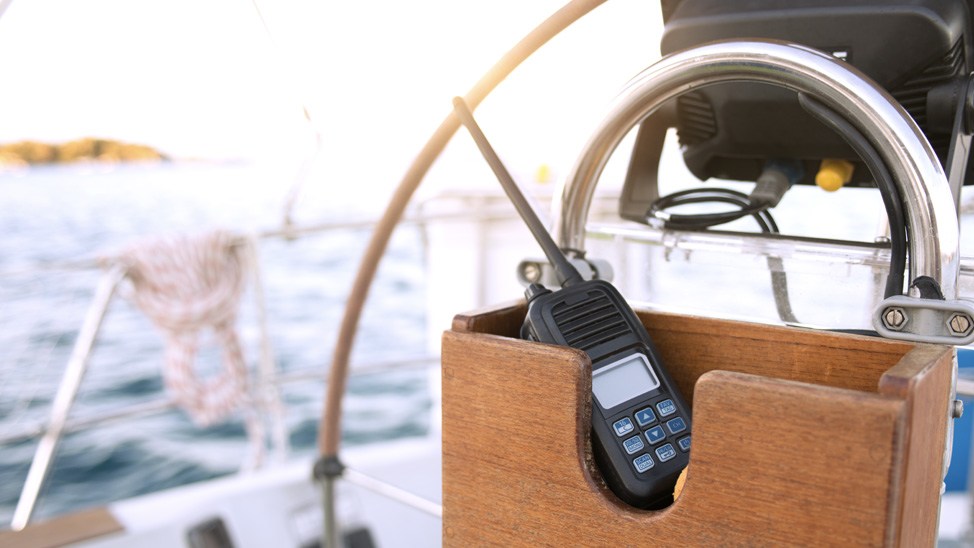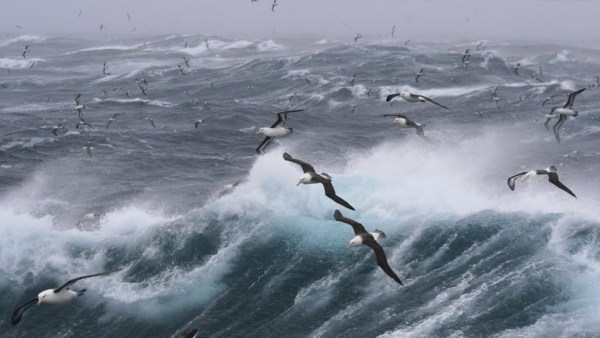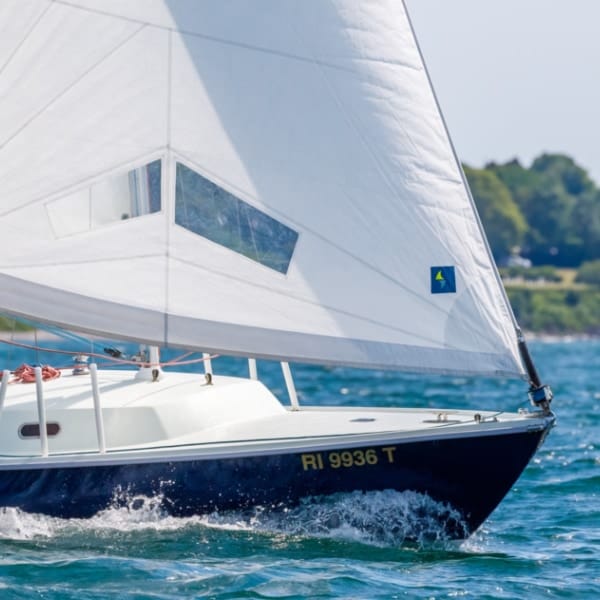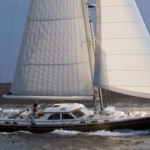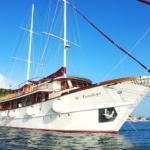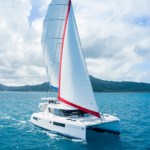For coastal cruising sailors, the VHF radio serves as the foremost lifeline. It also plays a crucial role in sharing safety-related information both with fellow vessels and the shoreline. Cell phones, on the other hand, are primarily useful for everyday communication and contribute to safety by reducing non-urgent transmissions on radio frequencies.
VHF radio is the preferred method for calling for help on the water because it broadcasts signals that nearby radios can receive. This means that authorities like the Coast Guard and other vessels in your vicinity might hear your call and provide assistance promptly. The USCG VHF network can pinpoint the source of a transmission, improving response effectiveness. However, in contrast to telephone calls, radio communications require users to follow established etiquette and regulations to prevent interference when multiple users attempt to talk simultaneously.
Appropriate VHF Channels for Specific Communications
VHF (Very High Frequency) radio communication uses specific channels for various purposes, and the allocation of these channels may vary by region or country. However, there are standard VHF marine channels that are commonly used worldwide for specific types of communication.
Here are some of the standard VHF channels and their purposes:
- Channel 9 (156.450 MHz):
- Recreational Boating and Commercial Vessel Working Channel.
- Used for ship-to-ship and ship-to-shore communication, as well as bridge-to-bridge communication.
- Channel 13 (156.650 MHz):
- Navigation Safety Channel.
- Used for navigation and safety-related communication, such as passing arrangements, collision avoidance, and other vessel movements.
- Channel 16 (156.800 MHz):
- International Hailing and Distress Channel (Emergency Channel).
- Used for making distress calls (Mayday), urgent calls (Pan-Pan), and initial contact with other vessels or authorities.
- Always monitor this channel for emergency communications, but avoid unnecessary chatter.
- Channel 22A (156.600 MHz):
- U.S. and Canadian Coast Guard Liaison Channel.
- Used for non-distress coordination with the Coast Guard.
- Channel 68 (156.425 MHz):
- Non-commercial Vessel Working Channel (Marinas and Harbors).
- Used for communication between recreational boaters, marinas, and harbors for routine operations.
- Channel 69 (156.475 MHz):
- Non-commercial Vessel Working Channel (Recreational Boating).
- Used for communication between recreational boaters for non-commercial purposes.
- Channel 70 (156.525 MHz):
- Digital Selective Calling (DSC) Channel.
- Used for sending automated distress alerts and other digital communications.
- Channel 71 (156.575 MHz):
- Non-commercial Vessel Working Channel (Recreational Boating).
- Used for communication between recreational boaters for non-commercial purposes.
- Channel 72 (156.625 MHz):
- Non-commercial Vessel Working Channel (Recreational Boating).
- Used for communication between recreational boaters for non-commercial purposes.
- Channel 73 (156.675 MHz):
- Non-commercial Vessel Working Channel (Recreational Boating).
- Used for communication between recreational boaters for non-commercial purposes.
It’s important to note that some of these channels, like Channel 16, are designated for specific purposes and should not be used for routine or non-emergency communication to keep the channel clear for distress calls and emergencies.
Always consult local regulations and guidelines, especially if you are operating in a specific region or country, as channel allocations and usage may vary. Additionally, when using VHF radios, adhere to proper radio etiquette and avoid unnecessary transmissions to ensure efficient and effective communication.
Common VHF Calls
Several common VHF calls are standardized for effective communication. Here are some of them:
- Mayday Call: A Mayday call is used in emergencies when a vessel is in distress and requires immediate assistance. It is used for life-threatening situations and is repeated three times: “Mayday, Mayday, Mayday.” The distress signal is followed by the vessel name, position, nature of distress, and any other relevant information.
- Pan-Pan Call: A Pan-Pan call is used for urgent situations requiring assistance but not immediately life-threatening. It is also repeated three times: “Pan-Pan, Pan-Pan, Pan-Pan.” The message includes the vessel name, position, and the nature of the problem.
- Securité Announcement: This is used to make important safety announcements, such as warnings about heavy shipping traffic, navigational hazards, or weather updates. It begins with “Securité, securité, securité” and is followed by the announcement.
- All Stations Call: Used to make a call to all vessels on the same channel. It can be used for general announcements or to request information from other nearby vessels.
- Bridge-to-Bridge Communication: Common in maritime use, this communication is typically used for vessel navigation and safety discussions between ship bridges. It includes conversations about passing arrangements, navigation intentions, and collision avoidance.
- Position Report: Vessels often provide regular position reports to update their location and course to nearby vessels. These reports are crucial for collision avoidance and safety.
- Traffic Report: Used to report unusual traffic conditions or events, such as a vessel navigating in a manner that may pose a hazard.
- Routine Call: Used for non-urgent, routine communication between vessels. It includes sharing information like vessel names, positions, and intentions.
- Weather Updates: Vessels may broadcast weather information, such as current conditions, forecasts, and storm warnings, especially in areas prone to rapidly changing weather.
- Request for Assistance: In non-distress situations, vessels may request assistance with tasks like obtaining weather information, medical advice, or equipment repair.
It’s essential to follow proper procedures and adhere to established protocols when using VHF radio communication to ensure safety and effective communication, especially in maritime environments where lives and assets are at stake. Additionally, these calls may vary slightly in format or terminology depending on local regulations and international conventions.
Proper Procedures for Making VHF Calls
Proper procedures for making VHF radio calls are essential to ensure effective and clear communication, especially in critical situations. Below are guidelines for making common VHF calls:
Mayday Call:
- In emergency situations where life or property is in immediate danger, declare “Mayday” three times: “Mayday, Mayday, Mayday.”
- Clearly state your vessel name, current position, nature of distress, and any other relevant information.
- Maintain open communication with rescue authorities and follow their instructions closely.
Example: “Mayday, Mayday, Mayday. This is [Your Vessel Name] in position [Your Position], experiencing a fire in the engine room. We have [number] persons on board. Request immediate assistance.”
Pan-Pan Call:
- For urgent but non-life-threatening situations, declare “Pan-Pan” three times: “Pan-Pan, Pan-Pan, Pan-Pan.”
- Provide your vessel name, current position, and a brief description of the problem or urgency.
- Await further instructions or assistance as needed.
Example: “Pan-Pan, Pan-Pan, Pan-Pan. This is [Your Vessel Name] at [Your Position], experiencing engine trouble and requesting assistance. No immediate danger to life.”
Securité Announcement:
- Begin by announcing “Securité” three times: “Securité, securité, securité.”
- Relay the safety announcement, such as warnings about navigational hazards or adverse weather conditions.
- Include essential details for the safety of other vessels/aircraft in the area.
Example: “Securité, securité, securité. This is [Your Vessel Name] reporting a large drifting log in [Location], which poses a hazard to navigation. Exercise caution in the area.”
All Stations Call:
- Address “All Stations” before your message.
- Deliver your message or announcement to all vessels on the same channel.
Example: “All Stations, this is [Your Vessel Name] with an update on the weather conditions in the [Area].”
Routine Calls:
- Address the specific vessel you wish to communicate with.
- Begin the call with the name of the vessel you are calling.
- State your vessel/aircraft name, your position, and the purpose of your communication.
Example: “[Recipient’s Vessel Name], this is [Your Vessel Name] at [Your Position]. Requesting permission to pass on your port side.”
Remember that proper radio etiquette includes listening for a response, using clear and concise language, and maintaining a professional and calm demeanor during communications. Always monitor the appropriate VHF channel for your area and comply with local regulations and international conventions.
Source: https://www.navcen.uscg.gov/us-vhf-channel-information

